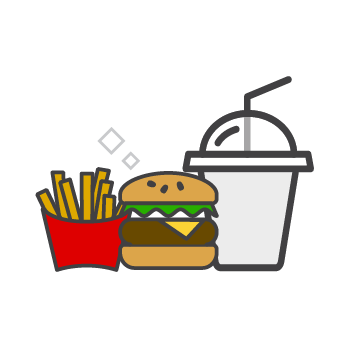Can a Brand be Leveraged Through a Crisis?
by Yello Mar 31, 2020

I was born in 1985, the front end of the group not always affectionately referred to as millennials. In my lifetime so far, I have never experienced a crisis of this magnitude. Living in a country with a median age of approximately 31 years old, it is fair to assume that the majority of the buying or addressable market has also never experienced such an unexpected and powerful decline in day to day activities. With market projections hazy to non-existent, what does this mean for marketing strategies and plans?
Investopedia describes a marketing strategy as an “overall game plan for reaching prospective customers and turning them into customers (consumers) of the products or services that the business provides.”
This may seem like an overly simplistic version of a truth every seasoned marketer already knows, but I found this description particularly apt at this time. It iskey to remember that marketing plans contain activities that support your overall business strategy. As we are experiencing, a marketing strategy can quickly evolve (sometimes out of necessity) based on transient market conditions. Marketers have to be agile enough to still push towards strategic marketing goals while nurturing and reframing marketing plans to support new realities.
I have long been impressed with the principles of Simon Sinek. His golden circle shows a very simple concept that is powerful for a time such as this. The golden circle model advocates three key areas of a business.
| The Why – Your Purpose. This is not about making money, but a purpose, cause or belief. The reason your organisation exists.
| The How – Your Process. What sets your products apart from the competition?
| The What – Tangibility – what you sell or offer.
This model brings to the fore an interesting concept, which is, people do not buy your what they buy your why. There are two main parts of the brain that factor into this conversation, the neocortex, which is responsible for rational thought and language, is linked to the what, while the limbic brain, which is responsible for trust, loyalty and human behavior, is linked to the how and why. The core driver for final decisions made is the limbic brain.
Antonio Damasio of the University of Southern California summed it up well. He opined: “we are not thinking machines that feel, we are feeling machines that think”.
So, what does this mean for your brand? Remember, emotions drive actions. And so, during this period of COVID-19, you must reinforce yourwhy and create an emotional connection with your audience.
Inspired Companies are built from the inside out, rather than outside in!
Here is a few tips that will help you reinforce your why, which will help you reap the rewards long after life has returned to normalcy.
- Invest in Digital Channels – Now is the time to be heavy handed on digital channels
- If you have a blog, post regularly and share on all your channels. Utilise Google Analytics to monitor the kind of content that persons are reading and create similar content.
- Keep your website up to date and monitor and analyse the user journey on the site. As you look to appeal to the emotions of clients, you must measure every moment that matters. These insights will help you to greatly understand what kind of content your audience is craving.
- Sponsor your content. With so many persons working from home, you have a captive audience. Engage them with your content and use this time to connect with persons who were not even aware of your business. Build an emotional bridge. Sell your why. Facebook Story Advertising, YouTube Advertising and Instagram Stories and Native Feed Advertising is critical.
- Grow your social media channels – With access to cellphones and data exploding, social media is growing exponentially in the Caribbean. During this period, persons will be using their social media channels more than ever before. Consider the following tactics:
- Keep all social media profiles up to date
- Track and provide content that resonates with your audience. Give your customers helpful information especially related to your industry e.g. if you are a bank, tell your customers how they can save money.
- Find creative and innovative ways to keep your audience engaged. Make use of the video features of the platforms. Engagement on your channel will create an emotional connection with your customer. Humanising your brand is critical.
- Utilise Video Content – Video is the most engaging format for content consumption and has been for quite a while. Therefore, consider the following:
- Ensure that at the least 50% of your content contains a video. The human brain can process a video 60,000 times faster than text.
- Ensure that your video content is of an appropriate length for the platform it is posted on. For example, a video that is two minutes long may be appropriate for YouTube but will not be best for Instagram. Fun Fact: in the last two years, over 50% of videos posted are less than two minutes long with videos 30 seconds or less receiving the best responses.
- Use video on all your platforms. Social Media, website and blog. Remember you are selling your why and video content is emotive and a major key in building that emotional bridge with your customers.
- Use live video wherever possible. During this time persons will be spending a significant amount of time with their phones. Sharing live content with them around your team or community initiatives will go a long way in building an emotional bridge with your client.
- This is not a time to launch a new product or service. Unless you are launching a service critical to the day-to-day survival of consumers in the market, please delay. Once COVID-19 has blown over, you will be able to launch your product on the back of the feel-good factors you would have created from the strategies above.
As the business community continues to navigate these uncharted waters, remember COVID-19 is not a death knell for your business. This is a key opportunity to work with your marketing team, partners and agencies to find new ways to build bridges with your clients.
Please stay safe, protect your employees and family. I wish you all success with your marketing plans over the period, and I look forward to connecting (remotely of course).








